
The Emerald City of Oz is the sixth of L. Frank Baum's fourteen Land of Oz books. It was also adapted into a Canadian animated film in 1987. Originally published on July 20, 1910, it is the story of Dorothy Gale and her Uncle Henry and Aunt Em coming to live in Oz permanently. While they are toured through the Quadling Country, the Nome King is assembling allies for an invasion of Oz. This is the first time in the Oz series that Baum made use of double plots for one of the books.
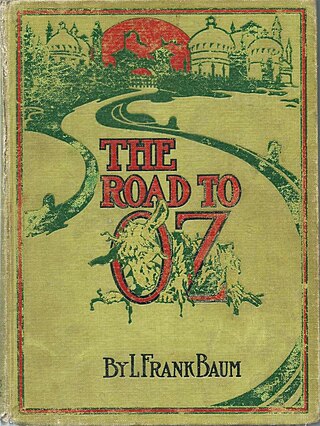
The Road to Oz is the fifth of L. Frank Baum's Land of Oz books. It was originally published on July 10, 1909 and documents the adventures of Dorothy Gale's fourth visit to the Land of Oz.

Ozma of Oz: A Record of Her Adventures with Dorothy Gale of Kansas, Billina the Yellow Hen, the Scarecrow, the Tin Woodman, the Cowardly Lion and the Hungry Tiger; Besides Other Good People Too Numerous to Mention Faithfully Recorded Herein, published on July 30, 1907, was the official third book of L. Frank Baum's Oz series. It was the first in which Baum was clearly intending a series of Oz books.
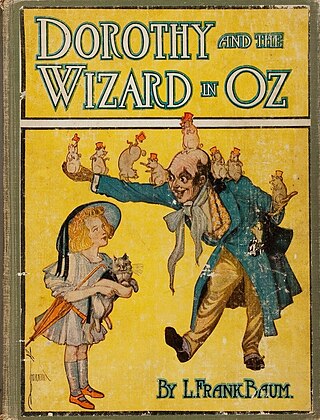
Dorothy and the Wizard in Oz is the fourth book set in the Land of Oz written by L. Frank Baum and illustrated by John R. Neill. It was published on June 18, 1908 and reunites Dorothy Gale with the humbug Wizard from The Wonderful Wizard of Oz (1900). This is one of only two of the original fourteen Oz books to be illustrated with watercolor paintings.

The Lost Princess of Oz is the eleventh canonical Oz book written by L. Frank Baum. Published on June 5, 1917, it begins with the disappearance of Princess Ozma, the ruler of Oz and covers Dorothy and the Wizard's efforts to find her. The introduction to the book states that its inspiration was a letter a young girl had written to Baum: "I suppose if Ozma ever got hurt or losted, everybody would be sorry."

The Magic of Oz is the thirteenth book in the Oz series written by L. Frank Baum. Published on June 7, 1919, one month after the author's death, The Magic of Oz relates the unsuccessful attempt of the Munchkin boy Kiki Aru and former Nome King Ruggedo to conquer Oz.

The Land of Oz is a magical country introduced in the 1900 children's novel The Wonderful Wizard of Oz written by L. Frank Baum and illustrated by W. W. Denslow.

The Deadly Desert is the magical desert in Nonestica that completely surrounds the fictional Land of Oz, which cuts it off from the rest of the world.

Jack Pumpkinhead is a fictional character from the Land of Oz and appears in several of the classic children's series of Oz books by American author L. Frank Baum.

The Nome King is a fictional character created by American author L. Frank Baum. He is introduced in Baum's third Oz book Ozma of Oz (1907). He also appears in many of the continuing sequel Oz novels also written by Baum. Although the character of the Wicked Witch of the West is the most notable and famous Oz villain, it is actually the Nome King who is the most frequent antagonist throughout the entire book series.
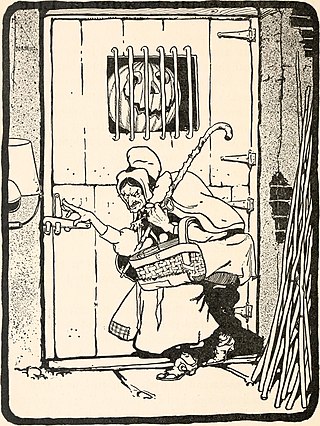
Mombi is a fictional character in L. Frank Baum's classic children's series of Oz Books. She is the most significant antagonist in the second Oz book The Marvelous Land of Oz (1904), and is alluded to in other works. Mombi plays a very important role in the fictional history of Oz.

The Gnome King of Oz (1927) is the twenty-first in the series of Oz books created by L. Frank Baum and his successors, and the seventh by Ruth Plumly Thompson. Like nineteen of the twenty previous books, it was illustrated by John R. Neill.
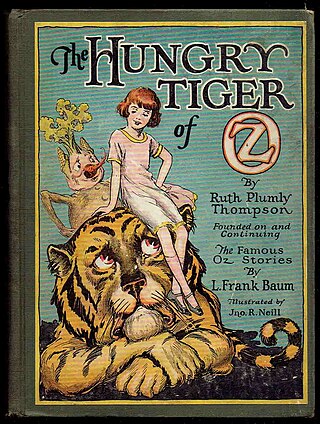
The Hungry Tiger of Oz (1926) is the twentieth in the series of Oz books created by L. Frank Baum and his successors, and the sixth written by Ruth Plumly Thompson. It was illustrated by John R. Neill.

Handy Mandy in Oz (1937) is the thirty-first of the Oz books created by L. Frank Baum and his successors, and the seventeenth written by Ruth Plumly Thompson. It was illustrated by John R. Neill.
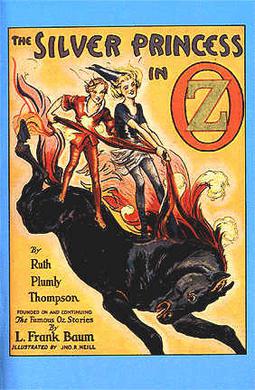
The Silver Princess in Oz (1938) is the thirty-second of the Oz books created by L. Frank Baum and his successors, and the eighteenth written by Ruth Plumly Thompson. It was illustrated by John R. Neill.

The Wonderful Wizard of Oz, known in Japan as Ozu no Mahōtsukai, is a Japanese anime television series adaptation based on four of the original early 20th century Oz books by L. Frank Baum. In Japan, the series aired on TV Tokyo from 1986 to 1987. It consists of 52 episodes, which explain other parts of the Oz stories, including the events that happened after Dorothy returned home.

The Land of Ev is a fictional country in the Oz books of L. Frank Baum and his successors. The country was first visited in Baum's third Oz novel, 1907's Ozma of Oz, and was the first of Baum's countries that surround the Land of Oz. This book introduced the Nome King, a recurring villain who lives underground beneath the Land of Ev.

The Tik-Tok Man of Oz is a musical play with book and lyrics by L. Frank Baum and music by Louis F. Gottschalk that opened at the Majestic Theatre in Los Angeles, California on March 31, 1913. It is loosely inspired by Baum's book Ozma of Oz (1907), incorporates much of the material from Baum's book The Road to Oz (1909), and was the basis for his 1914 novel, Tik-Tok of Oz. It was promoted as "A Companion Play to The Wizard of Oz" and directed by Frank M. Stammers. The play is known from its advertising and published music, but survives only in earlier manuscript.
















